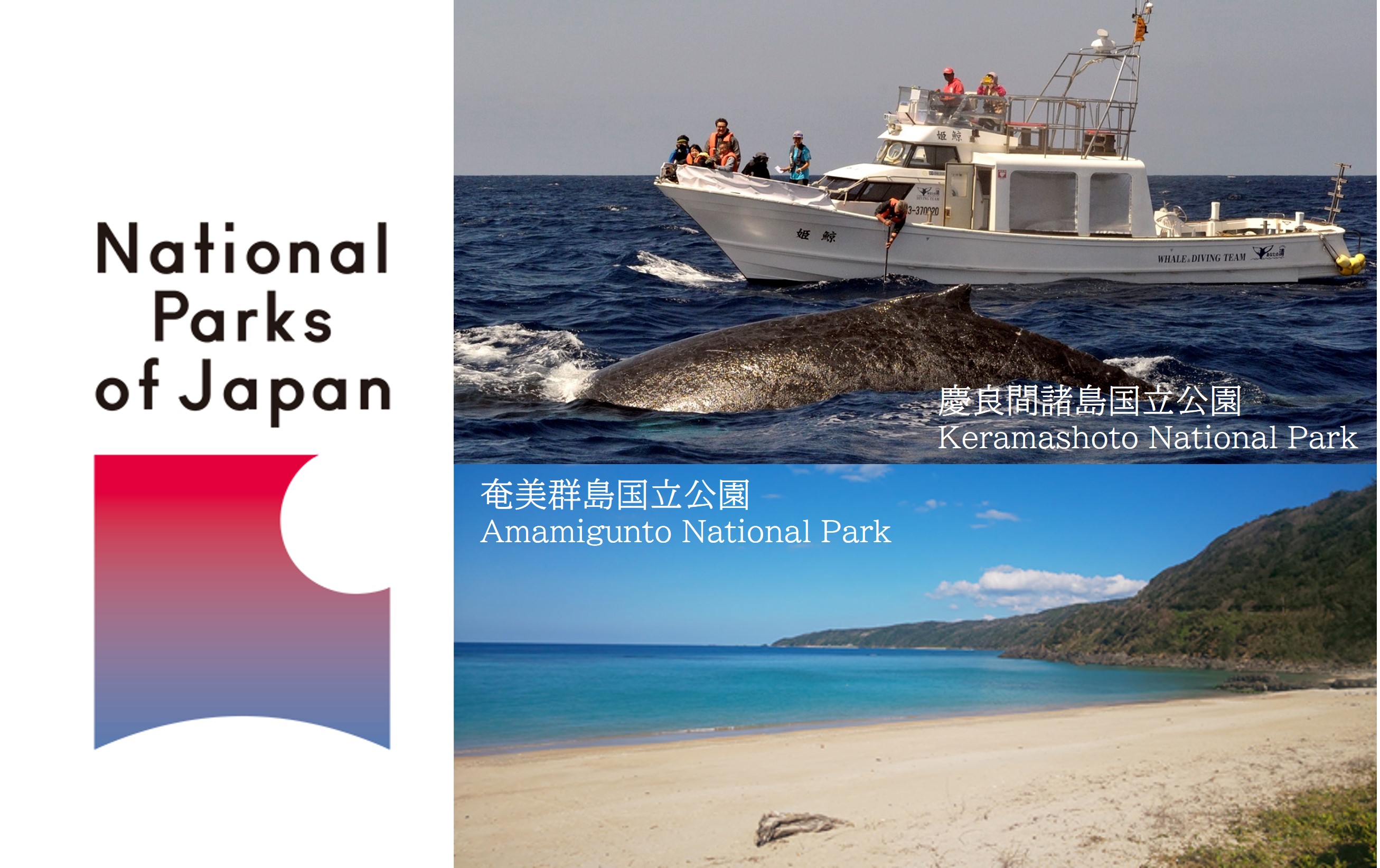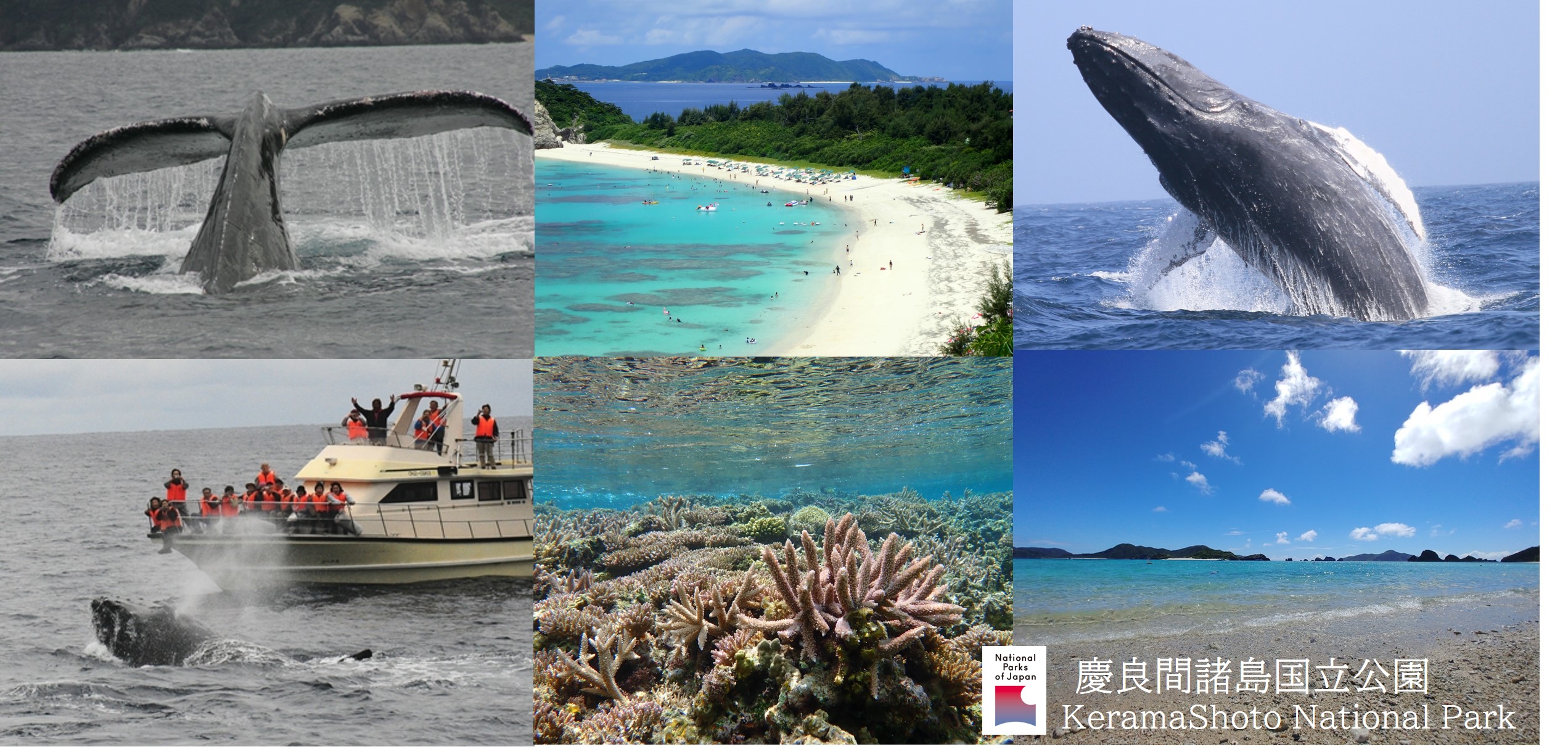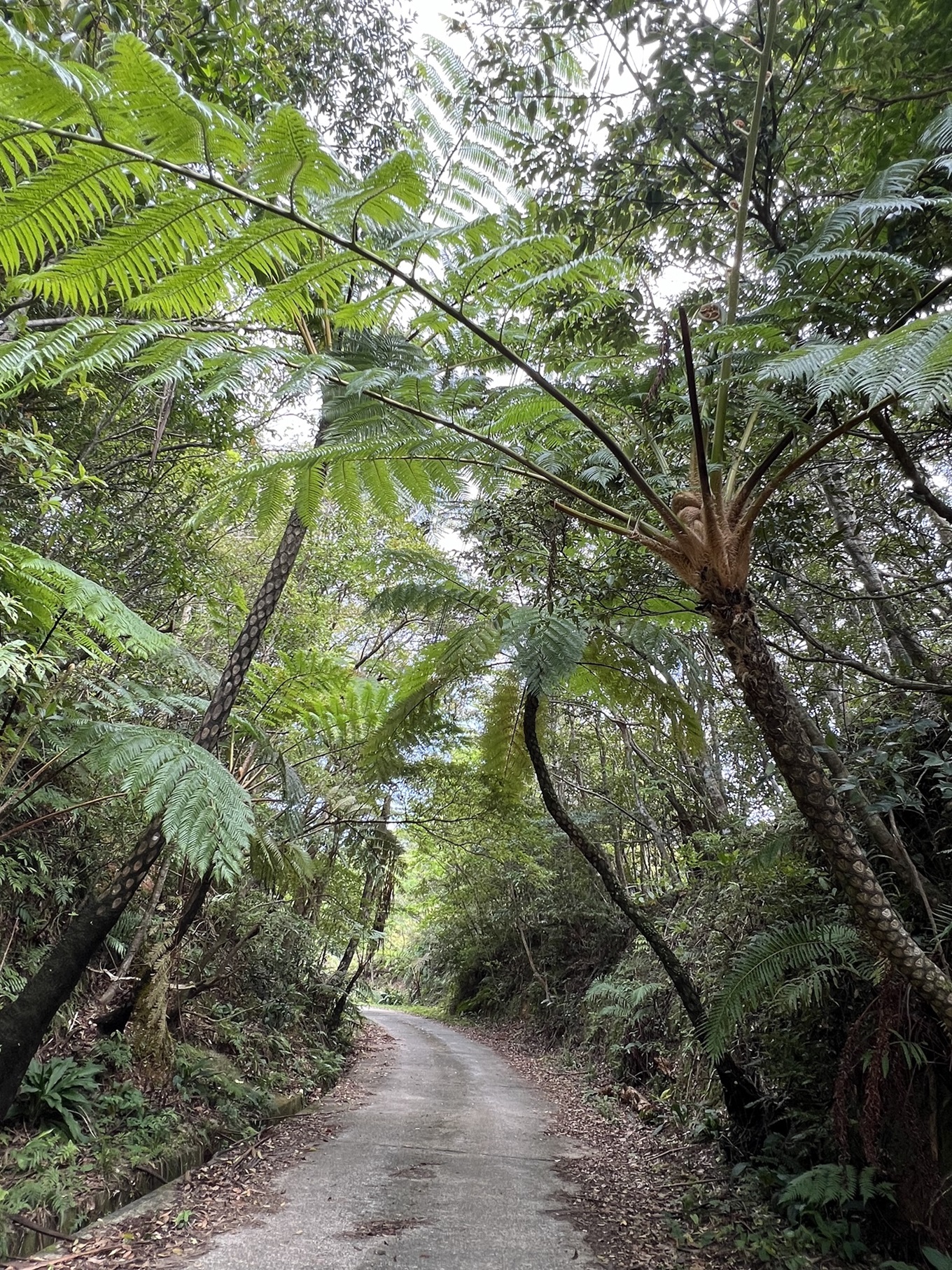Tourism EXPO Japan 2025 Aichi/Central Japan

Kerama Islands National Park/Amami Islands National Park
The Kerama Islands (Japanese: Keramashoto) were designated a National Park on March 5th (Coral Day), 2014. Keramashoto National Park is made up of two villages: Tokashiki Village and Zamami Village, and is located about 40 km west of Okinawa's main island. Its landscape consists of many islands and the surrounding sea, whose distinctive color is known as "Kerama Blue", and which is densely populated by coral reefs with around 248 different coral species. It is also a breeding ground for humpback whales. With the sea accounting for more than 90% of its total area, with 90,475 ha of sea for 3,520 ha of land, Keramashoto National Park is a maritime National Park.
Marine activities such as scuba diving, stand-up paddling, snorkeling, or kayaking can be enjoyed regardless of the season. Whale-watching is also popular, with humpback whales visiting each year between December and March to breed and raise their young. Both villages in the National Park have their own whale-watching association, each with self-imposed rules for respectful observation. These efforts, undertaken with environmental consideration, aim to create a "sea where whales and humans coexist sustainably for the next 100 years".
We are waiting for you in Keramashoto National Park this winter!
Approximately 14 species of native mammals have been identified in the Amami Islands. Of these, the Amami rabbit, Amami spiny rat, Tokunoshimatoge rat, and Kenagane rat are thought to have been distributed in the Far East of the continent before the Quaternary period when the Amami Islands were part of the Eurasian continent, and survived until now when Amami Oshima and Tokunoshima were separated from the continent and isolated, becoming extinct in the continent. It is thought to be a relict species. In addition to endemic bird species such as the Lidth's jay and the Amami yamashigi, more than 330 species of birds have been recorded in Japan, which is about 50% of the 633 species recorded in Japan so far, since the islands are also migratory stopover sites. In addition, 11 species of native amphibians, including the Otton's frog, are found here, which is equivalent to about 20% of all amphibians living in Japan. In July 2021, "Amami Oshima, Tokunoshima, northern Okinawa Island, and Iriomote Island" were designated as the "Amami Oshima, Tokunoshima, northern Okinawa Island, and Iriomote Island". In July 2021, "Amami Oshima, Tokunoshima, northern Okinawa Island, and Iriomote Island" were registered as a World Natural Heritage site in recognition of their biodiversity.
Marine activities such as scuba diving, stand-up paddling, snorkeling, or kayaking can be enjoyed regardless of the season. Whale-watching is also popular, with humpback whales visiting each year between December and March to breed and raise their young. Both villages in the National Park have their own whale-watching association, each with self-imposed rules for respectful observation. These efforts, undertaken with environmental consideration, aim to create a "sea where whales and humans coexist sustainably for the next 100 years".
We are waiting for you in Keramashoto National Park this winter!
Approximately 14 species of native mammals have been identified in the Amami Islands. Of these, the Amami rabbit, Amami spiny rat, Tokunoshimatoge rat, and Kenagane rat are thought to have been distributed in the Far East of the continent before the Quaternary period when the Amami Islands were part of the Eurasian continent, and survived until now when Amami Oshima and Tokunoshima were separated from the continent and isolated, becoming extinct in the continent. It is thought to be a relict species. In addition to endemic bird species such as the Lidth's jay and the Amami yamashigi, more than 330 species of birds have been recorded in Japan, which is about 50% of the 633 species recorded in Japan so far, since the islands are also migratory stopover sites. In addition, 11 species of native amphibians, including the Otton's frog, are found here, which is equivalent to about 20% of all amphibians living in Japan. In July 2021, "Amami Oshima, Tokunoshima, northern Okinawa Island, and Iriomote Island" were designated as the "Amami Oshima, Tokunoshima, northern Okinawa Island, and Iriomote Island". In July 2021, "Amami Oshima, Tokunoshima, northern Okinawa Island, and Iriomote Island" were registered as a World Natural Heritage site in recognition of their biodiversity.
Co-exhibitor of National Parks of Japan, Ministry of Environment.
Sanriku-Fukko National Park/Towada-Hachimantai National Park :
Amamigunto National Park :
Ashizuri-Uwakai National Park :
Aso-Kuju National Park :
Aso-Kuju National Park / Kirishima-Kinkowan National Park :
Chubusangaku National Park :
Chubusangaku National Park / Fuji-Hakone-Izu National Park :
Eco Tourism Promotion Council :
Eco Tourism Promotion Council<Kamiichi town, Toyama/Gero city, Gifu/Toba city, Mie> :
Ise-Shima National Park :
Kerama Islands National Park/Amami Islands National Park :
Keramashoto National Park :
Kirishima-Kinkowan National Park :
National Park ( Nikko National Park / Oze National Park ) :
National Park (Yambaru National Park) / (Yakushima Park) :
National Park(Daisen-Oki National park)/(San'inkaigan National Park) :
National Park(Joshin'etsukogen/Myoko-Togakushi renzan) :
National Parks (Ise-Shima National Park/Yoshino-Kumano National Park) :
National Parks of Japan (Setonaikai National Park / Ashizuri-Uwakai National Park) :
Setonaikai National Park :
Towada-Hachimantai National Park :
Yakushima (Island) National Park :
Yambaru National Park :
Yoshinokumano National Park :
| Booth No | E-035 |
|---|---|
| Area | Japan |
| Official site | https://www.env.go.jp/nature/nationalparks/list/ |
| SNS Links |
Photos





